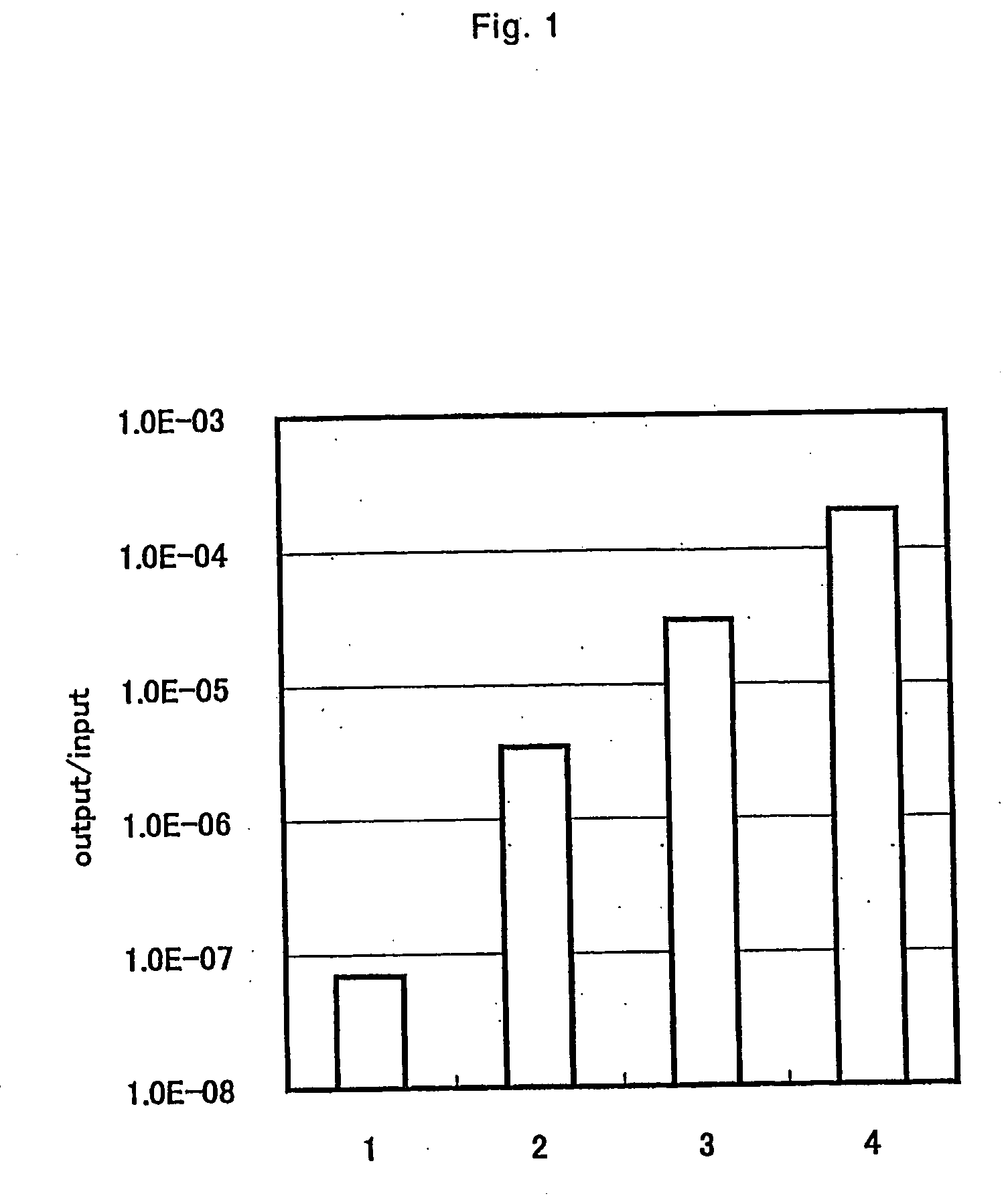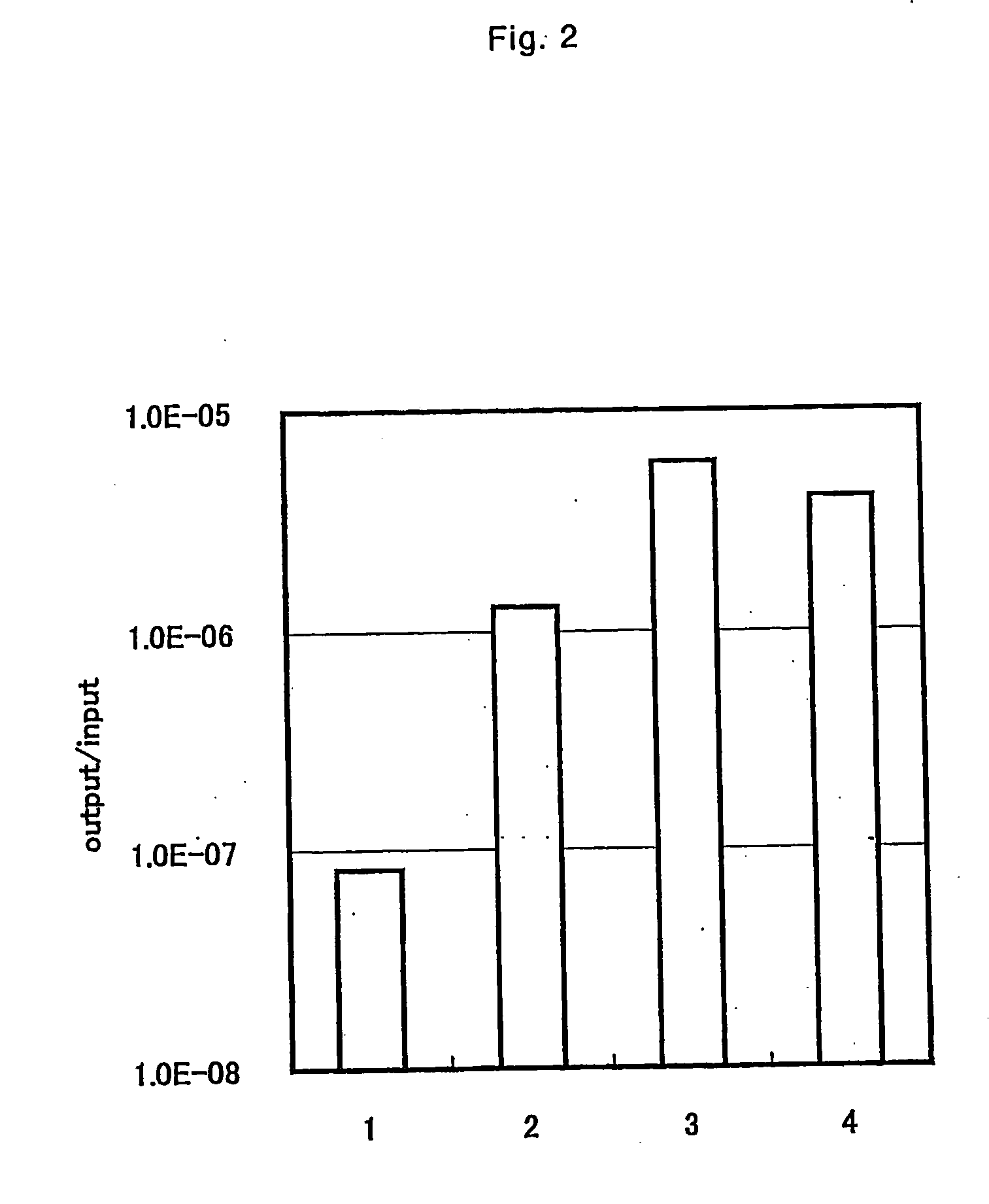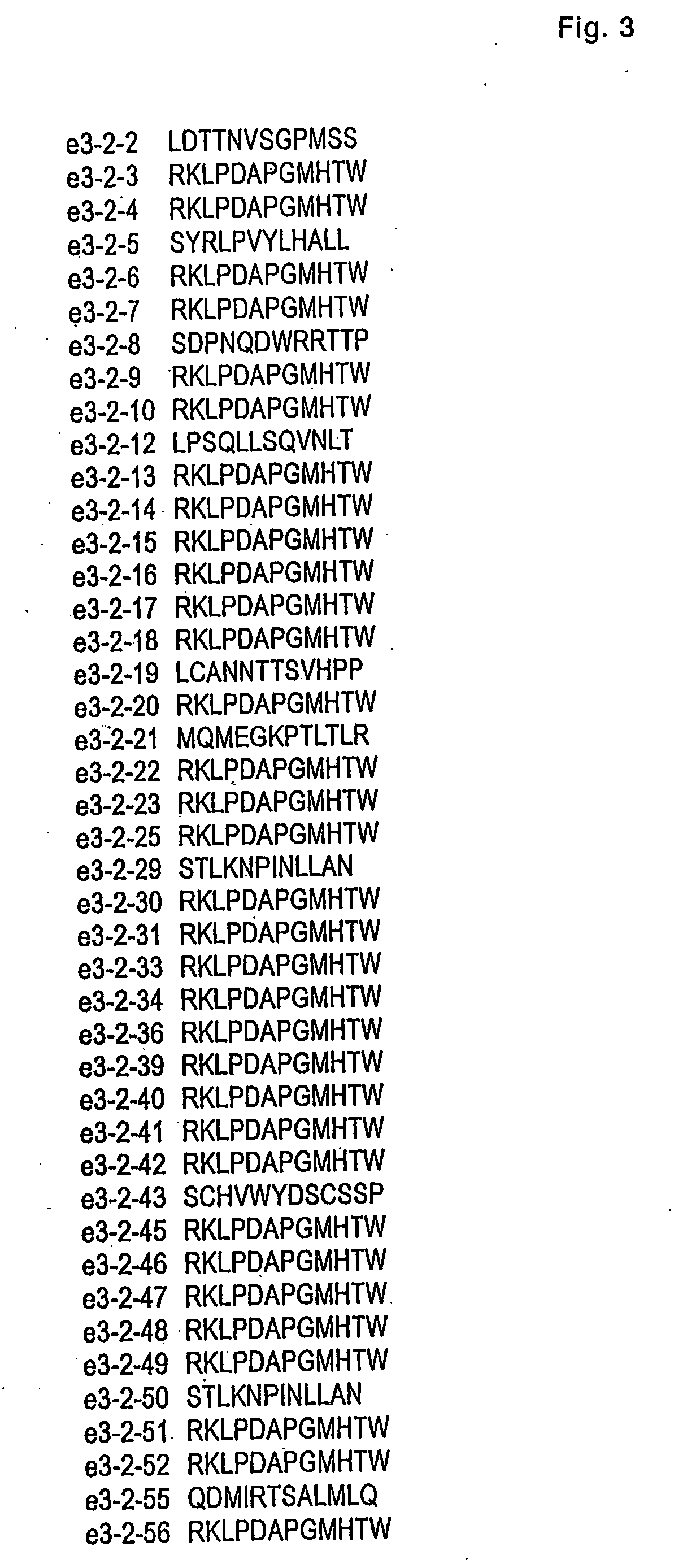Peptides capable of binding to titanium silver silicone
- Summary
- Abstract
- Description
- Claims
- Application Information
AI Technical Summary
Benefits of technology
Problems solved by technology
Method used
Image
Examples
example 1
[0082] 10 mg of titanium particle with a particle diameter of 150 μM (Sumitomo Titanium Corporation, Hyogo) was put into a 1.5 ml-Eppendorf tube, and washed twice with a solution of 500 μl of 50 mM tris (hydroxymethyl) aminomethane (herein after referred to as tris (Kishida Chemical (Osaka)) HCl buffer pH 7.5; 150 mM of sodium chloride (Wako Pure Chemicals, Osaka) solution (herein after referred to as TBS) supplemented with 0.1% bovine serum albumin (herein after referred to as BSA), 0.1% Polyoxyethylenesorbitan monolaurate (herein after referred as Tween-20 (Sigma, St. Louis)). Washing of titanium particles was performed by centrifuging with a desktop centrifuge H1300 (Kokusan) at 13,000 rpm, 5 sec, to precipitate titanium particles and to remove supernatant. After washing, in order to block the non-specific adsorption of the phage, the mixture was stirred by rotating with 1 ml of the same solution for 30 min at room temperature by using a rotary shaker rotator RT-50 (Taitec).
[008...
example 2
[0093] By using the phage clone obtained in Example 1, the binding ability to titanium was evaluated by the following experiment. The same method as for panning operation shown in Example 1 was performed. The difference between Example 1 is that the stirring time of titanium and phage clone was 1 hour; the Tween 20 concentration and BSA concentration in each solution was 0.5%, and 1%, respectively, and that the titer of the phage added was 109 pfu for clone from D12, and 1011 pfu for clone from C7C. The binding ability of titanium of each phage clone is shown in FIG. 5.
example 3
[0094] As for the clone strongly bound particularly with titanium (expressing peptide of SEQ ID NO: 3), the binding form of titanium surface and phage was examined, by measuring with QCM-D300 (Q-sense AB, Goeteborg), which is a device for quantification of interaction with a quartz crystal microbalance.
[0095] For a quartz crystal microbalance, titanium sensor being a genuine part of QCM-D300 was used. The temperature was fixed at 24.99° C., and the actual measurement value was from around 24.68° C. to 24.70° C. It was measured in a condition of blocking the sensor with BSA, and in a condition without blocking. When blocking with BSA is not performed, after measuring the standard value with TBS, the phage solution adjusted so that the phage titer becomes 1010 pfu / ml was measured continuously. When blocking with BSA is performed, after measuring the standard value with TBS, blocking was conducted by incubating for about 10 min with TBS, 0.1% BSA, and after washing again migrated BSA ...
PUM
| Property | Measurement | Unit |
|---|---|---|
| Length | aaaaa | aaaaa |
| Length | aaaaa | aaaaa |
| Length | aaaaa | aaaaa |
Abstract
Description
Claims
Application Information
 Login to View More
Login to View More - R&D
- Intellectual Property
- Life Sciences
- Materials
- Tech Scout
- Unparalleled Data Quality
- Higher Quality Content
- 60% Fewer Hallucinations
Browse by: Latest US Patents, China's latest patents, Technical Efficacy Thesaurus, Application Domain, Technology Topic, Popular Technical Reports.
© 2025 PatSnap. All rights reserved.Legal|Privacy policy|Modern Slavery Act Transparency Statement|Sitemap|About US| Contact US: help@patsnap.com



